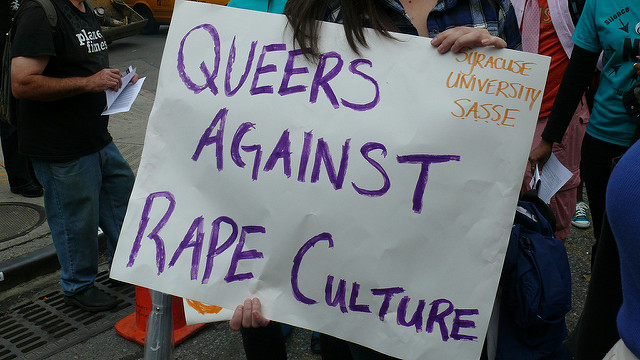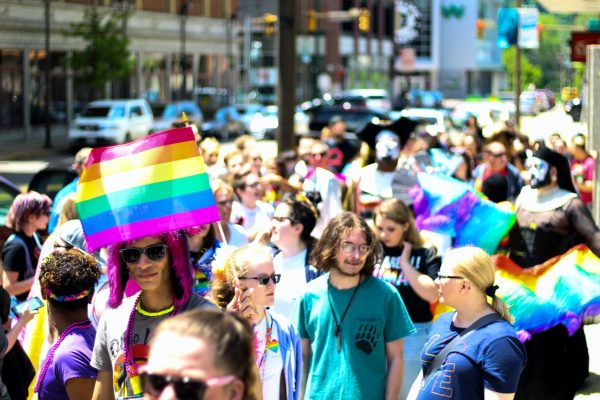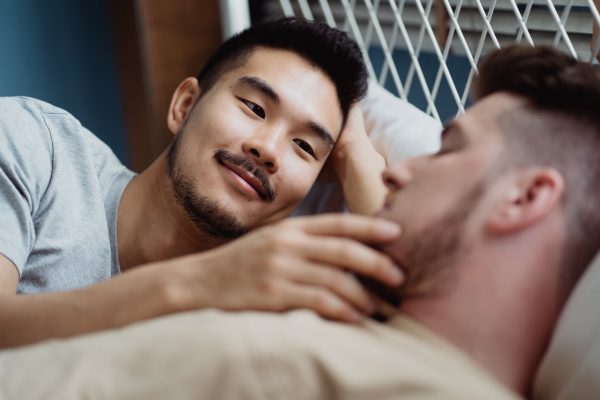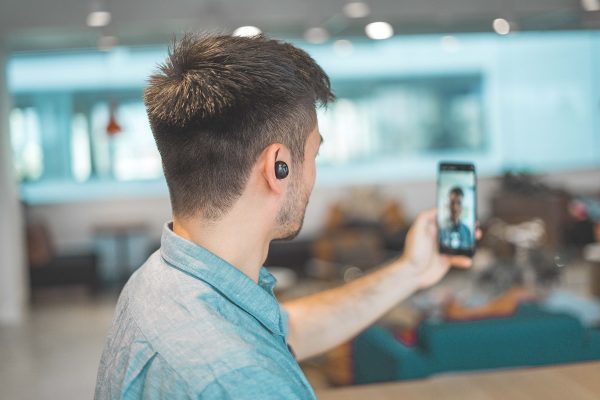Topics like sexual assault and rape are things that I don’t really enjoy discussing. However, I think it’s really important to talk about things that no one talks about, and rape in the LGBTQ+ Community is definitely one of them. In this piece, I am going to talk about this by looking at different identities and different forms of sexual violence. Please note that I didn’t call this piece sexual assault in the LGBTQ+ Community because I’ll be focusing on rape and while rape is a form of sexual assault, not all sexual assaults involve rape.
Let’s start off there.
According to the Rape, Abuse, and Incest National Network, sexual assault is sexual contact or behavior that occurs without the explicit consent of the victim. Some forms of sexual assault include rape and attempted rape, fondling or unwanted sexual touching, and forcing someone to perform sexual acts.
The FBI defines rape as “penetration, no matter how slight, of the vagina or anus with any body part or object, or oral penetration by a sex organ of another person, without the consent of the victim.” However, the definition of rape can differ from one state to another. To find out the definition, check out RAINN’s State Law Database. It’s important to note that there are different degrees and types of rape as well as the fact that it has evolved overtime. (RAINN)
However, what about LGBTQ folks? I’m glad you asked.
Gay and Lesbian Women
There is a lot of silencing of rape between two women, especially because of our heterosexist assumptions of what sex is. The language barrier extends further to society’s common idea that only men are rapists. This is when some people may choose to say sexual violence instead. Women are often socialized to be more passive and nurturing, while men are more aggressive. However, the feminine and masculine (femme and butch) dynamic may socialize those who are more feminine to be victimized and those who are more masculine to be aggressive. This standard definition of relationships is giving people the idea that these relationships mimic heterosexual ones, but it is not always the case. (Girshick)
In the Bisexual Community
Rape survivors’ sexual orientations are often assumed in binary identities of gay and straight, resulting in bisexual erasure. This also brings up the problem of biphobia, both within the straight and queer community (Fish). In a story in the book Women to Women Sexual Violence: Does She Call it Rape? A survivors’ bisexual identity was used as an excuse to rape her in fear and jealousy. I can imagine this making reporting even harder for bisexual folks because they may have to talk about their sexual pasts, revealing their bisexual identities. (Girshick)
Gay Men
Shame and guilt are very common among men who have been raped. This comes along with embarrassment and possible shame of being gay. However, most men who rape other men are heterosexual. What I found interesting about this is that it brings so many combinations of sexual orientations that I didn’t find with women: gay men raping heterosexual men, the opposite, heterosexual men raping heterosexual men, or gay men raping gay men. Male on male rape also brings with it the prevalence of HIV and AIDS. This is not to say that rape cases don’t come with other health risks or that HIV and AIDS are only one of the gay men. Someone who rapes someone probably doesn’t disclose their HIV status so HIV survivors (of any gender) can be reinfected (Scarce).
In the Trans Community
Trans folks are the most likely to be affected by violence, and this is no different for acts of rape. Similar to the bisexual community, trans folks may have a hard time because their identities are very misunderstood. They face the most violence, including by the police, which is who they’d be working with if they chose to report the rape case. In a study done for the book Violence against queer people: Race, Class, Gender, and the persistence of anti-LGBT discrimination, lesbian and transgender women were more likely to experience sexual assault. One of the respondents, a Black transgender woman, was “told by a police officer that she ‘couldn’t be raped’ because she ‘wasn’t a real woman’ (Meyer). Due to the lack of knowledge on trans identities, sometimes those found guilty don’t get charged for rape, or don’t get charged at all. One of the most known cases of sexual assault (which included rape) of a transgender person in the US was of Brandon Teena in 1993. You can see this story portrayed in the documentary film Boys Don’t Cry. (Scarce)
Statistics
- Approximately 1 in 8 lesbians (13%) and nearly half of bisexual women (46%) have experienced rape in their lifetime. (NIVIS)
- Twenty-six percent of gay men and 37% of bisexual men experienced rape, physical violence, and/or stalking by an intimate partner at some point in their lifetime. (NIVIS)
- Transgender women in male prisons are 13 times more likely to be sexually assaulted than is the general population, with 59% reporting sexual assaults (Sontag)
- In the Transgender community: Nearly half (47%) of respondents were sexually assaulted at some point in their lifetime, and one in ten (10%) were sexually assaulted in the past year. Respondents who have done sex work (72%), those who have experienced homelessness (65%), and people with disabilities (61%) were more likely to have been sexually assaulted in their lifetime. (James)
These are only the cases that are reported or surveyed.
Check out the sources below for more information.
Sources:
Fish, J., & Karban, K. (2015). Lesbian, gay, bisexual and trans health inequalities: International perspectives in social work (International perspectives in social work; International perspectives in social work). Bristol, UK: Policy Press.
Girshick, L. B.(2009). Woman-to-Woman Sexual Violence: Does She Call It Rape? Boston: Northeastern University Press.
James, S. E., Herman, J. L., Rankin, S., Keisling, M., Mottet, L., & Anafi, M. (2016).
The Report of the 2015 U.S. Transgender Survey. Washington, DC: National Center for Transgender Equality. http://www.transequality.org/sites/default/files/docs/USTS-Full-Report-FINAL.PDF
Meyer, D. (2015). Violence against queer people: Race, class, gender, and the persistence of anti-LGBT discrimination. New Brunswick, New Jersey: Rutgers University Press.
NIVIS: An Overview of 2010 Findings on Victimization by Sexual Orientation. The National Intimate Partner and Sexual Violence Survey. https://www.cdc.gov/violenceprevention/pdf/cdc_nisvs_victimization_final-a.pdf
Scarce, M. (1997). Male on male rape: The hidden toll of stigma and shame. New York: Insight Books.
Sexual Assault. RAINN. https://www.rainn.org/articles/sexual-assault
Sontag, D. (2015). Transgender Woman Cites Attacks and Abuse in Men’s Prison. The New York Times. https://www.nytimes.com/2015/04/06/us/ashley-diamond-transgender-inmate-cites-attacks-and-abuse-in-mens-prison.html?ref=oembed
State Law Database. RAINN. https://apps.rainn.org/policy/
Originally published on Color it Queer






